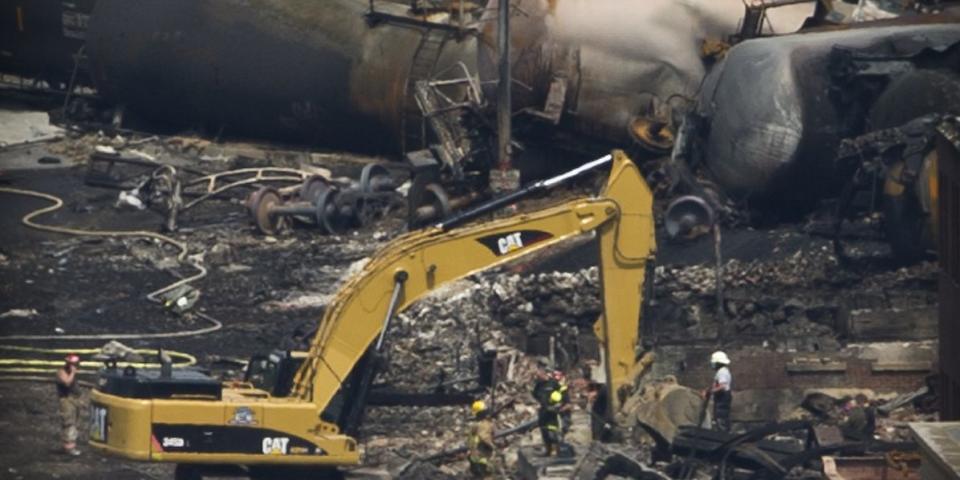New Federal Rule Could Create Horrifying 'Bomb Trains'

The Trump administration has made a new rule allowing natural gas transport by train.
The "bomb train" this creates is a sitting duck waiting to be ignited by almost anything.
Existing infrastructure protects natural gas, with a pretty good track record for safety.
A group of environmental protection organizations have sued President Donald Trump’s administration for trying to reduce the regulations on trains carrying extremely flammable materials. The result, the groups say, is a “bomb train” with enough explosive potential to level entire towns as it passes through.
DIVE DEEPER ➡ Read best-in-class science features and get unlimited access to Pop Mech , starting now.
The suing nonprofit Earthjustice makes the claim that just 22 train cars full of natural gas are explosive enough to rival the power of the bomb the U.S. government dropped on Hiroshima. If natural gas is that dangerous, how is it usually transported?
Rolling Stone reports the issue isn’t just for environmental groups—over a quarter of U.S. states, plus Washington D.C., are suing, too. The Attorneys General for those 15 total entities are listed in the suit, which “petition[s] this Court to review the United States Department of Transportation, Pipeline and Hazardous Materials Safety Administration’s final agency action entitled ‘Hazardous Materials: Liquefied Natural Gas by Rail’.”
They say the new rule is not lawful in accordance with the Administrative Procedure Act, the Hazardous Materials Transportation Act, and the National Environmental Policy Act. The full text of the rule includes extensive details about how and with what safety measures the liquid natural gas (LNG) will be transported. There are technical specs for the layered tanks and all the required handling.
You could argue it seems adequate to the task of carrying LNG via rail, but the rail itself is the problem. Currently, natural gas is transported as a flow through static pipelines for the longest distances possible and, like the roots of a tree, into smaller and smaller branches that eventually reach your home.
There are 3 million miles of this pipeline in the U.S. Something could happen to a natural gas pipeline, but that would represent a massive breach of a protected system. Natural gas as LNG can also be transported on ships, where common risks like civilian populations and passing vehicles just don’t exist in the same way as on land transport.
Instead, a train moves through regular areas, surrounded by combustion engines, moving parts, and large populations of people. If the Ford Pinto had been confined to rural pipelines and never turned on instead of driven and crashed on highways, we might have different associations with the name. The so-called “bomb train,” its detractors say, represents a negligible, symbolic gain in exchange for a totally unnecessary danger.
Natural gas pipelines rarely rupture, but when they do, these ruptures are primarily of pressurized gas that doesn’t ignite. The pressure alone is enough to blow entire craters in the soil above the pipeline, for example. Now consider a train car, where a T-boning vehicle powered by a manmade fireball is what strikes the tank—and think about the size of the pilot light that ignites your stovetop and oven.
You Might Also Like

 Yahoo Finance
Yahoo Finance 